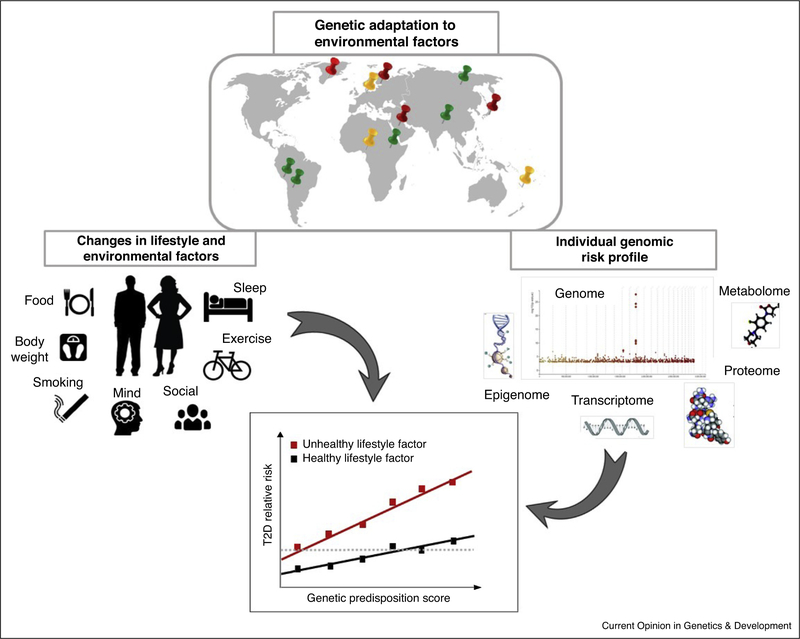Figure 1.
Gene × lifestyle interplay in type 2 diabetes. Schematic representation of G × E interaction in T2D. The spread of humans across the globe has led to genetic adaptation to diverse local environment (red; adaptation to dietary components such as diet rich in fatty acids or cereals, green; genetic adaptation to geographic distribution such as altitude, yellow anthropometric adaptation such as body weight or height. Adapted from Fan S, Hansen ME, Lo Y, Tishkoff SA. Going global by adapting local: A review of recent human adaptation. Science. 2016, 34:54–59). The enriched genome (Manhattan plot for T2D based on the UK Biobank data; available from https://biobankengine.stanford.edu) is unlikely to adapt to rapid changes in environmental factors, therefore genetic susceptible individuals are at higher odds to develop the disease. In addition, downstream genomic information, including epigenomics, transcriptomics, proteomics or metabolomics markers is likely to offer novel insights in the interplay between genomics and lifestyle factors.

